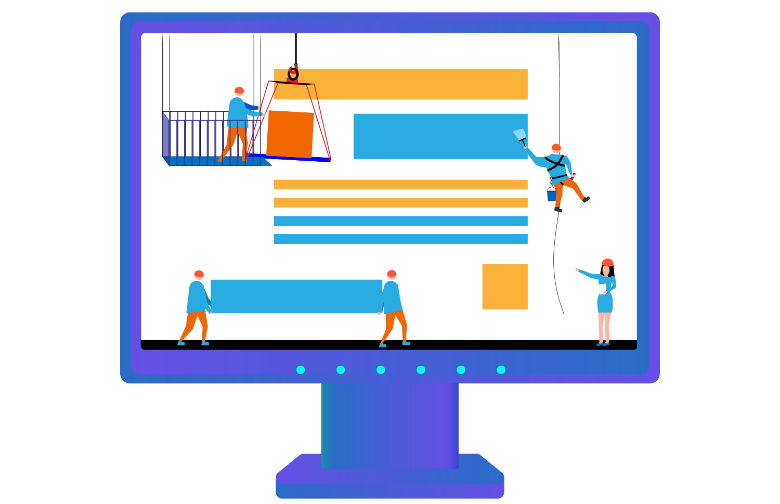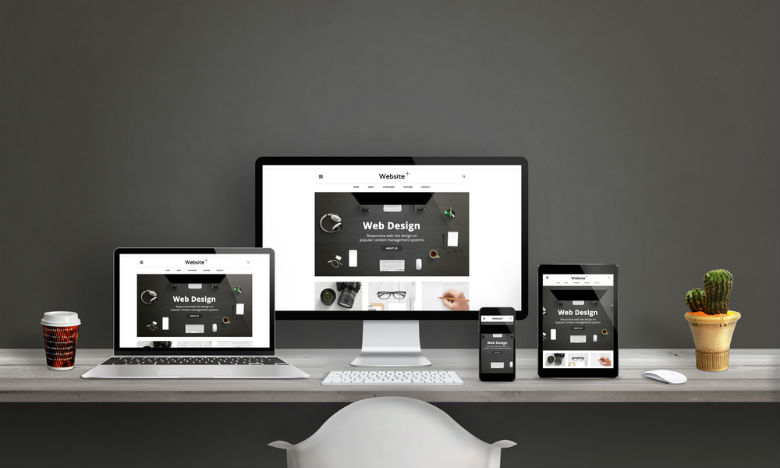A website is an essential tool for businesses and works like a salesperson, only it works 24-7. If you are looking at getting a website for your business or thinking of upgrading, this guide will give you an overview to the best practices for website development.
First we are going to look at the basics of website development to give you a better understanding of what it is and what is involved.
What is website development?
Basically, website development refers to the work that goes into building, upgrading and maintaining a website. It includes the related development tasks including:
- Client side scripting
- Server side scripting
- eCommerce website development
- Development content management systems
The website development process
The website development process is not exactly straight forward and needs proper planning put in place for best results. Whether you are building the first website for your business or upgrading to a new one, the same steps need to be taken.

Outline Your Goals
You will need do decide on what you want your website to achieve for your business. You can do this by setting out KPI's that you want to work towards.
KPI's for your website could include:
- Number of leads per month
- Number of sales per month
- Number of subscribers per month
- Number of visitors to your website per month
Your Target Market
If you are redesigning your website, you need to create buyer personas so you can create content and design your site around what will appeal to your target audience.
Your website should act as a go-to for your prospects to find solutions to their problems and information regarding your product or service. Your buyer persona research will fuel your content creation process; focus on persona pain points and how to solve their business problems. Think of your website content as a powerful way to showcase your expertise, build authority in your sector and develop trust with potential clients.
Decide How You Want People To Interact With Your Website
A transparent navigation system acts as a roadmap to direct visitors to various pages and information on your site. It is fundamental in encouraging visitors to stay, peruse your content and have a positive user experience, which subsequently leads to more sales and brand loyalty for your business.
Focusing on your visitor’s website journey will encourage better engagement and higher conversions
Read also: 7 key things to consider before building a new website
Why is website navigation important?
Website navigation is critical when it comes to distinguishing your brand. An organised and transparent navigation system acts as a road map to direct visitors to various pages and information on your site.
It is fundamental in encouraging visitors to stay, peruse your content and have a positive user experience, which subsequently leads to more sales and brand loyalty for your business.
Some of the best navigation best practices can include the following:
- Ensure the navigation is easily found
- Have your page structure, colours, and menus consistent on all pages except landing pages
- Keep your main navigation limited to seven items
You can read more about the importance of website navigation
Maximising the performance of your website on mobile
Mobile internet browsing usage has surpassed desktop and even Google are ranking websites based on their mobile performance.
Today your website should be designed for mobile with 60% of Google searches performed on mobile, it’s vital that your website is easily found. Google want to offer their users the best search results with the best websites to avoid unsatisfactory sessions. For this reason, you need to have a responsive website and it must be lightning quick for people to browse.
A mobile responsive website is no longer a “nice to have” feature, it’s a necessity for growing your business online. Responsive design will ensure a consistent experience for all visitors, regardless of device type.
Read more from this post: 5 reasons why you need a mobile responsive website
Optimising website speed
Your website should be designed to offer fast loading speeds for visitors. Users have a zero tolerance philosophy when it comes to slow loading times and insufficient website performance.
Poor loading speeds affect:
- Conversion rates
- ROI
- Search Engine Optimisation
Read our resource on: Is website loading time affecting your bottom line?
Setting up your website for conversions
It is critical to have your website set up for conversions. There is no point having a website that looks great but does not create leads and sales for your business.
Your website should be optimised for conversions on both desktop and for mobile. Some general tips for conversion optimisation would include:
- Using call to actions that work
- Having a simple navigation flow
- Use of high quality images
- Application of simple forms
- Key information placed above the fold
See our guide to conversion rate optimisation for your website
There are some tips for mobile optimisation that you should also carry out including:
- Having a compact navigation
- Reducing image sizes for faster loading speeds
- Reducing form sizes
- Using multiple call to actions on long pages
See also: How To Increase Mobile Conversion Rates in 4 Simple Steps
Common Website Redesign Mistakes To Avoid
Website redesign are not risk-free processes. For businesses that have an established website with good traffic and search rankings, the challenge of a redesign is maintaining this so sales are not lost. it’s crucial to make your website a revenue-driving channel and not just another pretty, shiny homepage.

Some of the main website redesign mistakes that adversely affect businesses include:
- Not basing decision on data
- Reusing the same content
- Ignoring SEO elements
- Failure to apply keywords
- Focusing on aesthetics over functionality
Read more about website redesign mistakes
Eliminate the annoying website features that are frustrating your visitors
When we browse online, whether it’s to research or purchase, we’re often faced with website glitches that hamper our user experience. From a long page loading time to annoying pop ups, we tend to leave these sites with a negative opinion. A poor website user experience can have a disastrous impact on your website performance stats; high bounce rates, low conversions and a poor search ranking.
Here are the the main annoying features that frustrate visitors to your website.
- Long page loading time
- Invasive pop ups
- keyword stuffing
- Website doesn't load properly on mobile
Wurkhouse created a resource in the past on the main annoying website features that are frustrating your visitors
Using The Right Colour Scheme For Your Website
Whether you’re creating a new website from scratch or re-designing your current site, the overall colour scheme is an important decision that requires careful consideration; Colour can impact on how we think and behave, as well as how we interpret things.
Following the 60-30-10 rule and using 3 main colours on your site is generally recommended. Allow 60% for the primary colour- the one that will set the overall tone. 30% will act as a secondary contrast to the main colour and 10% is allocated to an accent colour that compliments the other two aforementioned.
Learn more about choosing the colours for your website
Opting for growth driven design
For most companies, undergoing a site redesign is a time consuming, arduous process. Frustrations often arise over rising budgets, extended timelines, unexpected issues and conflict of interest.
Growth-driven design (GDD) minimises the risk of traditional website design with a smarter approach to achieving results using data.
GDD is an ongoing process, with focus on continuous learning and improvements rather than a large one-off project seen with traditional approaches. An adaptive model, businesses can take small steps, spreading the risk and cost over time.
GDD benefits include:
- Quicker turn around
- Investment is spread out over time
- Boosts marketing performance